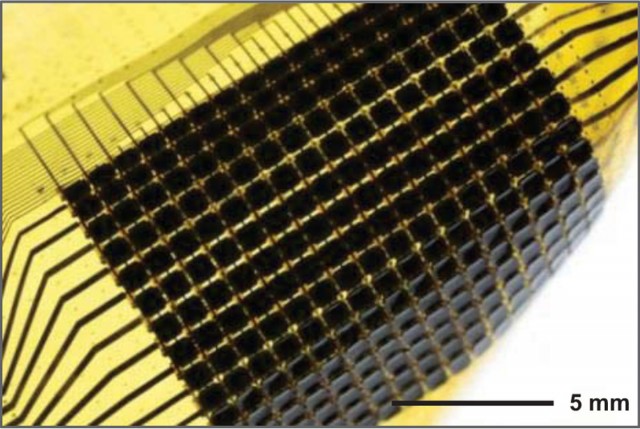Researchers make color-shifting surface modeled on squid
Ars Technica » Scientific Method 2014-08-22

Materials scientists may have many clever tricks up their sleeves, but with a several-billion-year head start, evolution has already beaten them to the creation of some amazing materials. One of the most astonishing natural systems is the skin of cephalopods such as squid, octopus, and cuttlefish. These animals can sense their background and control tiny structures that can radically change their skin color in a matter of seconds, allowing amazing feats of camouflage.
Now, an international consortium of researchers has decided that if you can't beat nature, you should copy it. The researchers have developed a flexible structure that can sense ambient conditions and adjust its color to match them. At the moment, it only works in black-and-white, but it's a start.
The color-shifting structures in the skin of cephalopods, termed chromatophores, rely on three layers to rapidly alter coloration. The top is a pigmented structure with muscles that allow it to expand and contract, altering the amount of light of different wavelengths that get absorbed. Below that is a reflective layer, which can also be actively altered by the nervous system. Below that is a passive white pigment that reflects incidental light. By varying the behavior of the two overlying layers, the animals are able to radically alter their visual appearance.
Read 6 remaining paragraphs | Comments